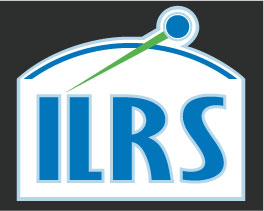Quick Links
- Network Map
- List of Stations
- Monthly Report Card
- Quarterly Report Card
- Network Status Page
- Potsdam CPF time bias service
- Procedure for estimating laser beam divergence
- Recent Station Upgrades
- Network station application form
- Revised ILRS station screening process at ILRS Operations Centers (NASA and EDC)
Site Occupation Designator (SOD) Procedure
History: Prior to 1983, only a four digit monument number was used to identify SLR and VLBI stations. Beginning in late 1983, the Crustal Dynamics Project (CDP) established the Site Occupancy Designator (SOD) System in an effort to clear up continued confusion concerning the history of occupations of the Project’s sites by both fixed and mobile laser and VLBI systems. This system uses an eight-digit code to uniquely describe each occupation of a geodetic monument by one of these systems and were retroactively assigned. Monument coordinates, eccentricities, system configurations, and other ancillary information can then easily be tied to a specified monument, system, and occupation period. This process for assigning SODs along with the responsibilities of the appropriate ILRS agencies and the CDDIS are discussed below.
Definition: The eight-digit SOD numerical code (shown here as MMMMSSOO) is composed of three distinct parts:
1. The first four digits (MMMM) is the CDP monument identification number or the system reference point (i.e., intersection of axes). Each monument or system reference point used by a laser system will be assigned a unique number. For example, 7114 is a monument at the Owens Valley Radio Observatory, which has been occupied by both MOBLAS-2 (SOD=71140201) and TLRS-1 (SOD=71141102). And for example, 7840 is the system reference point number for the fixed SLR system at Herstmonceux, United Kingdom (SOD=78403501).
2. The next two digits (SS) is the CDP system identification number used to identify which system is occupying the monument/system reference point. As examples, 02, 11, and 35 are the system number for MOBLAS-2, TLRS-1, and Herstmonceux, respectively, in the examples above.
3. The last two digits (OO) is the CDP occupancy sequence number which indicate the number of occupations of the monument by any laser system. This number will be incremented when there is a new system occupation or when the system’s eccentricities for a given monument have changed significantly (i.e., the change is greater than the uncertainty in the measurements) in any of its components (e.g., east, north, and up) from it’s previous measured set of eccentricities. A change in occupation number indicates there is new eccentricity information, which must be forwarded immediately to the CDDIS. As examples, 01 , 02, and 01 are the occupation number for MOBLAS-2, TLRS-1, and Herstmonceux, respectively, in the examples above.
Historical Note: Within the NASA SLR network in the 1980's, these last two digits of the SOD were also incremented when a significant modification to a system's measurement chain was made. This practice has been discontinued and violates the current SOD definition.
Note: Columns 13 through 20 of the ILRS normal point header record and columns 25 through 32 of the ILRS full-rate format for SLR data contain the SOD for the observation.
Responsibilities: In order to maintain control, the Crustal Dynamics Data Information System (CDDIS) has had the task of administering the SOD system. The ILRS Secretary has the responsibility of issuing the numbers in advance of site occupations. All organizations involved in the planning and execution of SLR measurement operations should provide the ILRS Secretary an e-mail indicating the proposed occupation or change. An assigned SOD for the occupation is then archived in the CDDIS and issued via e-mail to the station and the data analysts. Site eccentricities are maintained in two SINEX data bases (North, East, Up and X, Y, Z) on the CDDIS at:
https://cddis.nasa.gov/archive/slr/slrocc/ecc_une.snx
https://cddis.nasa.gov/archive/slr/slrocc/ecc_xyz.snx
After the SOD has been assigned, the station is responsible for contacting the IERS to get a new DOMES number. Once the DOMES number is obtained from the IERS, it should be included in the Site Log as an update, and communicated to the ILRS Secretary by email.
Acronyms:
CDDIS: Crustal Dynamics Data Information System
CDP: Crustal Dynamics Project
IERS: International Earth Rotation Service
SOD: Site Occupation Designator
SLR: Satellite Laser Ranging
VLBI: Very Long Baseline Interferometry
Related information
- Additional documentation on 20-Apr-2020 eccentricity updates
- NASA Official: Frank Lemoine
- Web Developers: 610 Web Dev
- Contact Us
- Last modified date: Dec 23, 2021
- Privacy Policy & Important Notices




